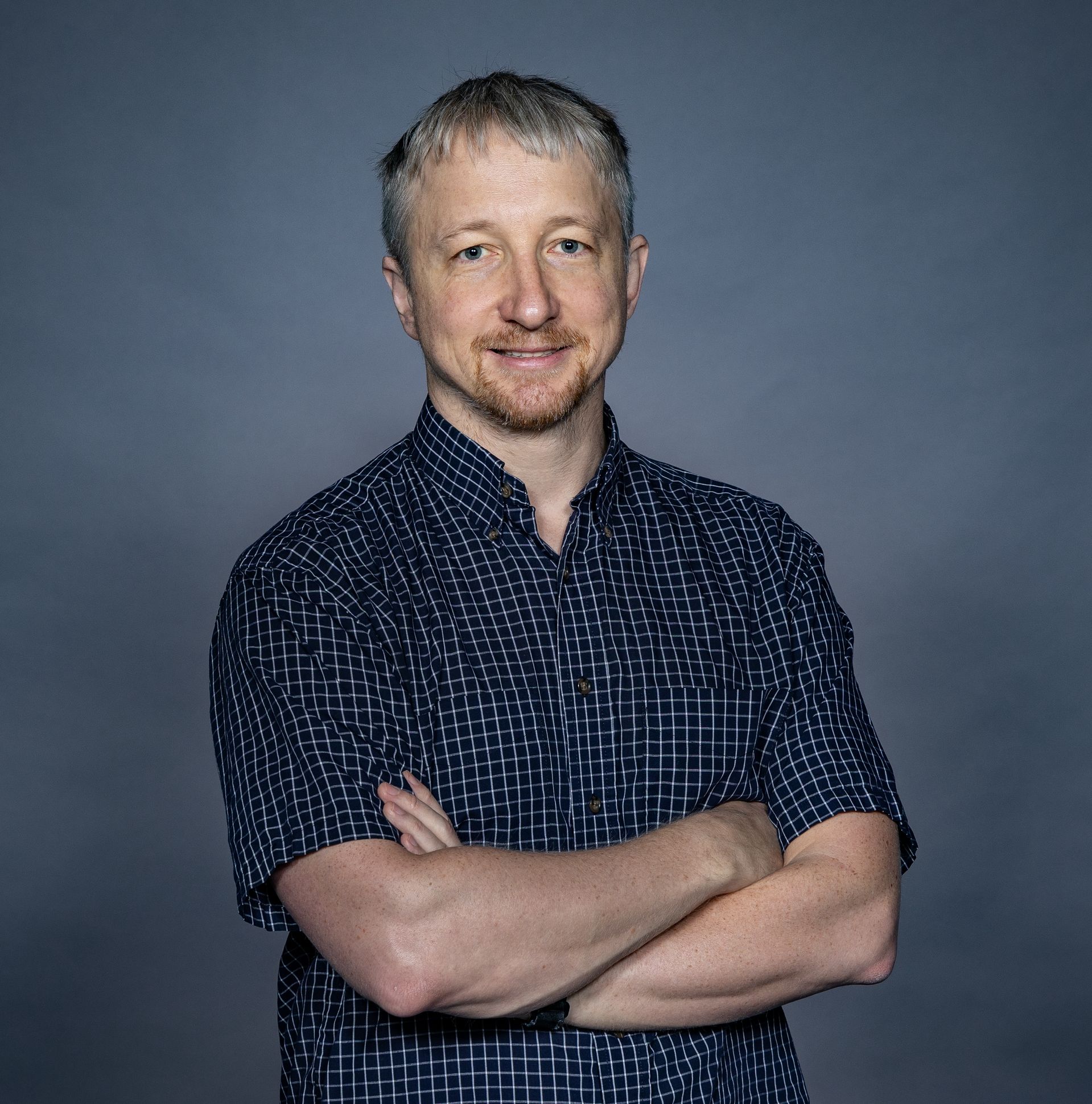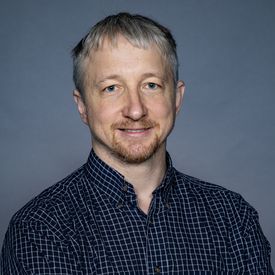Quantum Physicist Alexey Gorshkov Tackles the Big Problems
January 8, 2025
It’s hard enough to track the interactions of even a handful of quantum particles, but physicist Alexey Gorshkov has taken on an even more daunting task. He analyzes the complex choreography of thousands of atoms, photons, ions, and other denizens of the quantum realm, all governed by the quirky laws of quantum mechanics.
By studying these large quantum systems, Gorshkov hopes to gain new insights into building quantum computers. Advanced quantum computers, which have the potential to outperform classical computers, will require the coordinated interplay of thousands to millions of particles, says Gorshkov, a researcher at the National Institute of Standards and Technology (NIST) and a fellow at the Joint Center for Quantum Information and Computer Science (QuICS) and the Joint Quantum Institute (JQI). (Both QuICS and JQI are research partnerships between NIST and the University of Maryland.) The particles, he notes, are organized into qubits, the quantum equivalent of the ones and zeros of ordinary logic bits.
It’s impossible to even write down the most general state of hundreds of qubits. Such mathematical complexity—and the promise of solving intricate puzzles—has always attracted Gorshkov. His fascination with math puzzles began during his childhood in Russia, where he placed second in a nation-wide math Olympiad in high school.
Immigrating with his parents to the United States at age 15, Gorshkov continued to pursue his interest in mathematical puzzles but at Harvard University chose a double major in math and physics. “When you do just math, like, only two people in the world understand what you’re doing,” he explains. “Physics allowed me to still study math but apply it to something more relatable.”
Gorshkov got his first taste of quantum physics research during the summer after his junior year at Harvard, when he got the chance to use quantum computing techniques to analyze nuclear magnetic resonance, a technique that uses magnetic fields to probe the magnetic properties of atomic nuclei.
Intrigued by the topic, he joined Mikhail Lukin’s quantum physics group at Harvard for graduate school. For his doctoral thesis, Gorshkov developed new methods to harness the fragile but powerful effects of quantum mechanics to improve quantum communication, computation, and simulations. Although he became a theorist, Gorshkov appreciated that Lukin conducted both theoretical studies and experiments.
In his current work, Gorshkov continues to work with both theorists and experimentalists, leading a cadre of physicists studying quantum information science and large quantum systems. In that environment, “you make a theoretical prediction and then someone actually does an experiment to verify it,” he said. “It’s like, ‘Wow!’ It’s so pleasing.” Conversely, says Gorshkov, it’s just as rewarding when a theorist on his team successfully explains the seemingly puzzling results of an experiment.
“The interplay between theory and experiment is so exciting,” he notes.
Gorshkov’s studies have ranged from binding photons together so that they travel side by side, almost as if they were a single molecule, to exploring a special correlation, known as entanglement, among large numbers of quantum particles.
At the University of Maryland’s Physical Sciences Complex, Fridays from 2 p.m. to 4 p.m. are a special time for Gorshkov and his collaborators. That’s when the entire team gathers to hear a postdoc or graduate student present their latest findings on studies that intertwine quantum information science with quantum optics, atomic and molecular physics, and condensed matter physics. Although the presentation itself takes only an hour, the brainstorming, questions, and suggestions offered by the group fill the entire two-hour time slot.
“I’m lucky to be working with such amazing people,” Gorshkov said.
Experts
People
![headshot of Alexey Gorshkov]()
Alexey Gorshkov
RC3 Co-Lead

